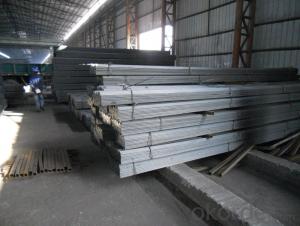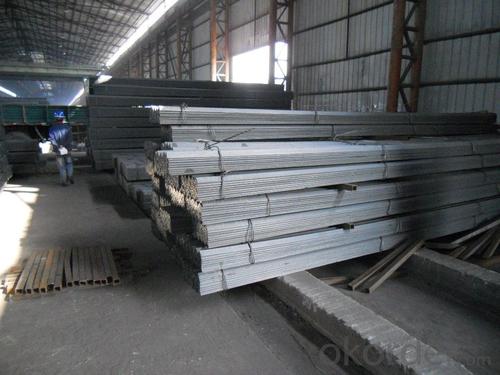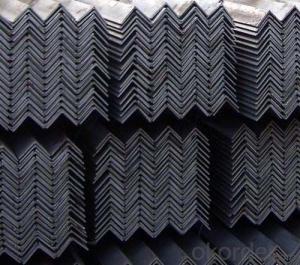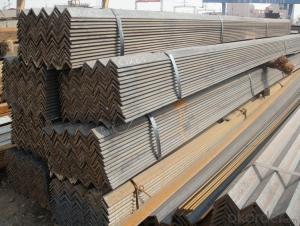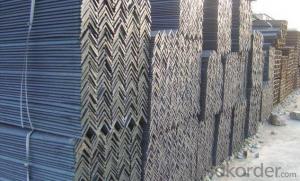Steel Equal Angle with Good Quality 150mmx150mm
- Loading Port:
- Tianjin
- Payment Terms:
- TT OR LC
- Min Order Qty:
- 50 m.t
- Supply Capability:
- 15000 m.t/month
OKorder Service Pledge
OKorder Financial Service
You Might Also Like
Specification
Product Description:
Specifications of Steel Equal Angle with Good Quality 150mmx150mm:
1. Invoicing on theoretical weight or actual weight as customer request
2. Length: 6m, 9m, 12m as following table
3. Sizes
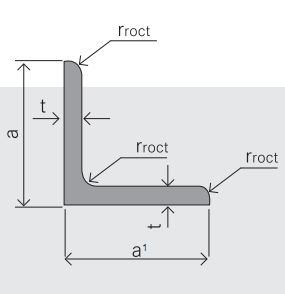
| Size(mm) | Mass(Kg/m) | Size(mm) | Mass(Kg/m) |
| 150*150*10.0 | 22.765 | 150*150*12.0 | 27.13 |
Payment terms:
1).100% irrevocable L/C at sight.
2).30% T/T prepaid and the balance against the copy of B/L.
3).30% T/T prepaid and the balance against L/C
Material details:
Grade | Element (%) | ||||
C | Mn | S | P | Si | |
Q235 | 0.12—0.20 | 0.3—0.7 | ≤0.045 | ≤0.045 | ≤0.3 |
Usage & Applications of Steel Equal Angle with Good Quality 150mmx150mm:
According to the needs of different structures, Angle can compose to different force support component, and also can be the connections between components. It is widely used in various building structures and engineering structures such as roof beams, bridges, transmission towers, hoisting machinery and transport machinery, ships, industrial furnaces, reaction tower, container frame and warehouse etc.
Packaging & Delivery of Steel Equal Angle with Good Quality 150mmx150mm:
1. Packing: it is nude packed in bundles by steel wire rod
2. Bundle weight: not more than 3.5MT for bulk vessel; less than 3 MT for container load
3. Marks:
Color marking: There will be color marking on both end of the bundle for the cargo delivered by bulk vessel. That makes it easily to distinguish at the destination port.
Tag mark: there will be tag mark tied up on the bundles. The information usually including supplier logo and name, product name, made in China, shipping marks and other information request by the customer.
If loading by container the marking is not needed, but we will prepare it as customer request.
Production flow of Steel Equal Angle with Good Quality 150mmx150mm:
Material prepare (billet) —heat up—rough rolling—precision rolling—cooling—packing—storage and transportation
FAQ:
Q1: Why buy Materials & Equipment from OKorder.com?
A1: All products offered byOKorder.com are carefully selected from China's most reliable manufacturing enterprises. Through its ISO certifications, OKorder.com adheres to the highest standards and a commitment to supply chain safety and customer satisfaction.
Q2: How do we guarantee the quality of our products?
A2: We have established an advanced quality management system which conducts strict quality tests at every step, from raw materials to the final product. At the same time, we provide extensive follow-up service assurances as required.
Q3: How soon can we receive the product after purchase?
A3: Within three days of placing an order, we will begin production. The specific shipping date is dependent upon international and government factors, but is typically 1 to 2 months.
Q4: How many tons can be loaded into one 20ft container?
A4: Around 23—25tons
Images of Steel Equal Angle with Good Quality 150mmx150mm:
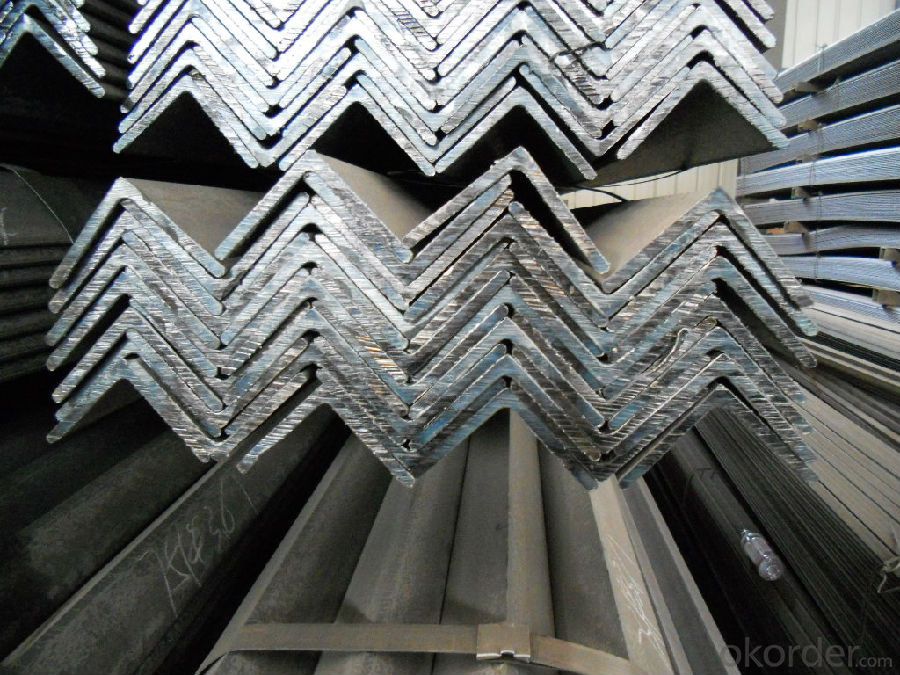
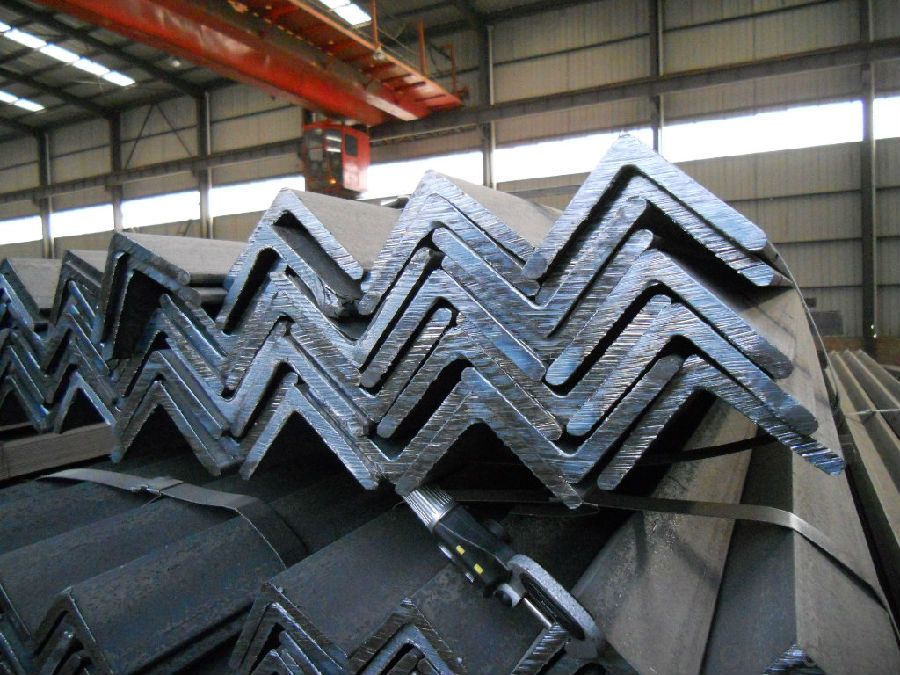
- Q: Can steel angles be used in mining or quarrying machinery?
- Yes, steel angles can be used in mining or quarrying machinery. Steel angles provide structural support and reinforcement to various components of machinery used in these industries. They are commonly used in the construction of frames, supports, and brackets for equipment such as crushers, conveyors, and screens. The high strength and durability of steel angles make them suitable for withstanding the heavy loads, vibrations, and harsh operating conditions typically encountered in mining or quarrying operations. Additionally, steel angles can be easily fabricated and welded to meet specific design requirements, making them a versatile choice for machinery applications in these industries.
- Q: How do steel angles contribute to the overall lateral stability of a structure?
- The overall lateral stability of a structure is improved by steel angles in various ways. Firstly, they serve as bracing members to counteract lateral forces like wind or seismic loads. By linking the angles to the building's main structural components, they assist in distributing these forces and preventing the structure from collapsing or deforming under the applied load. Additionally, steel angles can be utilized as stiffeners to boost the stiffness and rigidity of crucial structural parts. By incorporating angles into beams, columns, or other elements, their resistance to bending or buckling is heightened, thereby enhancing the overall lateral stability of the structure. Moreover, steel angles can act as shear connectors between different structural elements. For instance, by welding or bolting angles to beams, they establish a connection that facilitates the transfer of shear forces between the components. This is essential for ensuring that the structure remains stable and capable of withstanding lateral loads without significant deformation or failure. Furthermore, steel angles can be employed as diagonal members in truss systems. By forming diagonal bracing, they aid in evenly distributing the applied loads across the structure, preventing excessive lateral displacements and maintaining the overall stability of the building. In conclusion, steel angles play a crucial role in enhancing the lateral stability of a structure. Their application as bracing members, stiffeners, shear connectors, and diagonal members all contribute to distributing and resisting lateral forces, guaranteeing that the structure remains stable and capable of withstanding external loads.
- Q: Are steel angles susceptible to fatigue failure?
- Yes, steel angles can be susceptible to fatigue failure. Fatigue failure occurs when a material undergoes repeated loading and unloading cycles, leading to the initiation and propagation of cracks within the material. Steel angles, like any other structural components, can be subject to cyclic loading conditions, such as vibrations, oscillations, or repeated stress applications. Fatigue failure in steel angles is influenced by various factors, including the material's properties, the geometric shape of the angle, the magnitude and frequency of the applied loads, and the presence of any defects or stress concentrations. The presence of notches, welds, or sharp corners can act as stress raisers, leading to localized stress concentrations and potential crack initiation sites. To mitigate the risk of fatigue failure, engineers and designers consider several strategies. Firstly, understanding the anticipated loading conditions and designing the structure with appropriate safety factors can help ensure that the steel angles are not subjected to stress levels that exceed their fatigue strength. Secondly, minimizing stress concentrations through proper design, such as using rounded corners or fillets, can help distribute the stress more uniformly and reduce the likelihood of crack initiation. Additionally, regular inspection and maintenance of structures can help identify any potential fatigue cracks and allow for necessary repairs or replacements.
- Q: Can steel angles be used in the construction of power plants?
- Yes, steel angles can be used in the construction of power plants. Steel angles are commonly used in structural applications and are well-suited for supporting heavy loads and providing structural stability. In power plant construction, steel angles can be utilized for various purposes such as framing structural components, supporting equipment and machinery, reinforcing concrete structures, and providing structural integrity to the overall plant infrastructure. Additionally, steel angles offer excellent resistance to corrosion, which is particularly important in power plants where exposure to high temperatures, moisture, and chemicals is common. Overall, the versatility, strength, and durability of steel angles make them a suitable choice for use in the construction of power plants.
- Q: Can steel angles be used for foundation reinforcement?
- Yes, steel angles can be used for foundation reinforcement. Steel angles are commonly used in construction projects for their strength and durability. When properly installed and secured, steel angles can provide additional support and stability to a foundation, helping to prevent cracks, settlement, and other structural issues.
- Q: Are steel angles easy to install?
- Yes, steel angles are generally easy to install. They come in pre-cut lengths with pre-drilled holes, making them convenient for various applications such as construction, framing, or manufacturing. Additionally, they can be easily fastened using screws, bolts, or welding techniques, depending on the specific installation requirements.
- Q: Can steel angles be used for stair stringers?
- Yes, steel angles can be used for stair stringers. Steel angles provide strong support and stability, making them a suitable choice for constructing stair stringers.
- Q: How do steel angles perform under static or stationary loading conditions?
- Steel angles are commonly used in construction and engineering applications due to their strength and versatility. Under static or stationary loading conditions, steel angles exhibit excellent performance and stability. Static loading refers to a situation where a load is applied to the angle and remains constant without any motion. Steel angles are specifically designed to withstand such loading conditions. Due to their structural properties, steel angles have a high resistance to bending and twisting forces. This allows them to effectively support heavy loads without experiencing significant deformation or failure. Steel angles distribute the applied load evenly along their length, which helps to minimize stress concentrations. This property ensures that the angle can efficiently transfer the load to the supporting structure, providing stability and structural integrity. Additionally, steel angles can withstand compressive forces, which try to shorten or compress the material. The shape and cross-section of steel angles, specifically their L-shaped profile, contribute to their ability to resist compressive loading. This feature makes steel angles suitable for applications where static loads exert compressive forces, such as columns, beams, and bracing elements. Moreover, steel angles have a high resistance to shear forces, which occur when two or more parts of a structure slide or move in opposite directions. The design of steel angles, with their perpendicular legs, enhances their shear strength, allowing them to effectively resist shear loading under stationary conditions. In summary, steel angles perform exceptionally well under static or stationary loading conditions. Their structural properties, such as resistance to bending, twisting, compression, and shear forces, make them suitable for a wide range of applications in construction and engineering.
- Q: Can steel angles be used in bridges or elevated walkways?
- Yes, steel angles can be used in bridges or elevated walkways. Steel angles are commonly used in construction projects to provide structural support and stability. They can be effectively employed in bridge and walkway designs to enhance structural integrity and load-bearing capacity.
- Q: Can steel angles be used for manufacturing window frames?
- Yes, steel angles can be used for manufacturing window frames. Steel angles are commonly used in construction and manufacturing because of their strength, durability, and versatility. They provide a sturdy framework for windows and can withstand the weight and pressure of the window glass. Steel angles can be easily welded, bolted, or screwed together to create a strong and stable window frame. Additionally, steel angles can be customized to meet specific design requirements, making them suitable for various window sizes and shapes. Overall, steel angles are a popular choice for manufacturing window frames due to their reliability, strength, and adaptability.
Send your message to us
Steel Equal Angle with Good Quality 150mmx150mm
- Loading Port:
- Tianjin
- Payment Terms:
- TT OR LC
- Min Order Qty:
- 50 m.t
- Supply Capability:
- 15000 m.t/month
OKorder Service Pledge
OKorder Financial Service
Similar products
Hot products
Hot Searches
Related keywords
